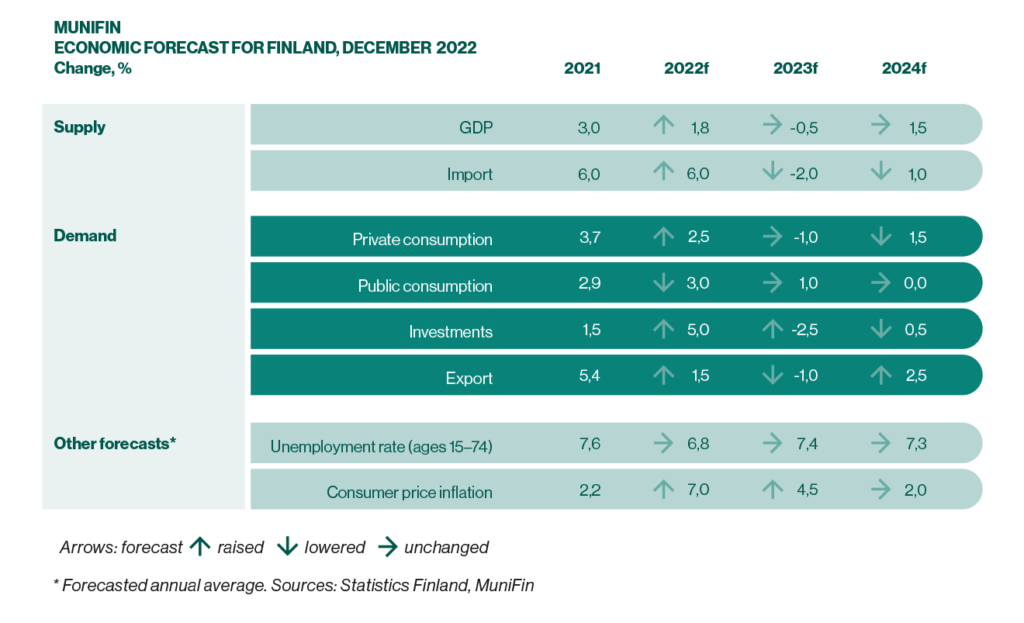European Commission approved an extension and amendments to the Finnish aid scheme to support municipal energy companies
The European Commission approved on 21 December 2022 an extension to the Finnish subsidised loan and guarantee scheme that allows MuniFin and municipalities to finance municipal energy companies. The Commission also extended the arrangement’s scope of application. The recently approved amendments to the scheme are in place until the end of 2023.
The aid scheme is related to the effect Russia’s war against Ukraine has had on European energy markets. Under normal conditions, EU State aid rules prohibit MuniFin from financing energy companies, but this scheme was approved under the Temporary Crisis Framework to ensure the continuity of the energy sector’s operations and strengthen Finland’s security of supply.
The Commission first granted MuniFin and Finnish municipalities license to finance municipal energy companies in October 2022, but this decision was only effective until the end of 2022. Under the arrangement approved in October, financing could be granted only towards liquidity needs related to the collateral requirements on the derivatives exchange, spot market, balancing market and bilateral trading.
When MuniFin, the Municipal Guarantee Board and the Ministry of Economic Affairs and Employment notified to the Commission of the recently approved scheme for 2023, they extended the arrangement’s scope to cover other potential crisis situations in energy companies. These include the elevated liquidity needs arising from the energy crisis that are related to working capital and investments.
Best prepare in advance
“We’ve been getting some inquiries about municipal energy companies’ financing, and we’re currently processing a few loan applications. We encourage both municipalities and their energy companies to prepare for possible financing needs in advance”, says Aku Dunderfelt, Executive Vice President, Customer Solutions at MuniFin.
MuniFin can finance energy companies either directly or through the municipalities that own them. MuniFin can finance municipal energy companies directly only if they have a 100% municipal guarantee. This requirement applies to all of MuniFin’s finance to companies under municipal control. MuniFin can process loan applications only after the loan has been guaranteed by the city or municipal council, and the funds cannot be transferred until after the guarantee decision has become legally valid.
Municipalities and their energy companies should prepare for potential financing needs in advance. The municipal council’s guarantee decision does not oblige the loan to be withdrawn if it proves unnecessary.
Loans must meet the Commission’s requirements
Loans granted to energy companies by either municipalities or MuniFin must meet the eligibility requirements set out in the Commission’s decision. These include, for example, the energy company’s written account of how it will allocate the funds to needs specifically related to the energy crisis.
Loan contracts under the recently approved scheme must be signed by 31 December 2023 at the latest. The maximum loan amount per beneficiary cannot exceed either a) the liquidity needs derived from the additional collateral requirements for the coming 12 months or b) 15% of the beneficiary’s average total annual turnover over the last three closed accounting periods. In other financing needs arising from the energy crisis than those derived from the collateral requirements on the energy markets, the maximum loan amount cannot exceed the needs for the coming six months. The maximum maturity of the loans is six years, which is three years more than the maximum maturity for loans under the previously approved scheme. The Commission’s decision also sets out minimum requirements for loan pricing and details other technical requirements.
MuniFin encourages municipalities and their energy companies to read the Commission’s decision carefully when preparing their decisions about energy company loans and to take into account the key principles of and references to the Commission’s decision when formulating their own decisions. The Commission’s decision will be available on the Commission’s website soon.


